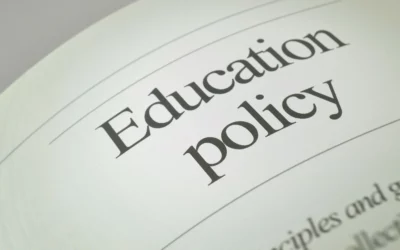
Written by Christine Cooke Fairbanks
August 13, 2021
This is part 4 in Sutherland’s new series highlighting primary sources from American history in the hopes of enriching civics education. To help teachers and students identify where to start with primary sources, this series looks at a limited selection that we believe are indispensable to understanding our nation’s government, history, and current circumstances. During this time, when much is being said about America’s history, our hope is that this series can encourage the use of primary sources to help students find context and understanding.
What is this primary source?
The Federalist Papers are a collection of 85 essays written to argue for ratification of the Constitution of the United States. The essays were published in several newspapers between 1787 and 1788, with the very first essay published in the Independent Journal in October 1787.
Though the essays were collectively written by James Madison, Alexander Hamilton and John Jay, each essay was signed “Publius” – named after a founder of the Roman Republic – as a way to protect the identities of the writers.
In the end, many started to guess the identities of the authors, and many rightly believed that Hamilton had a hand in it. James Madison revealed himself as one of the authors to George Washington, when Madison sent Washington the first seven articles in November 1787. Washington was sympathetic to their cause and took efforts to help distribute them beyond New York.
Alexander Hamilton wrote the vast majority, and James Madison wrote a significant number (including the well-known Federalist 10), while John Jay, due to illness, only wrote five of the essays.
Published as a book titled The Federalist in 1788, the first 77 of the 85 essays have become known as a key body of political work.
Where did it come from in our history?
After the Constitution had been signed and adopted, the next step was to get the states to ratify it. The essays that make up the Federalist Papers were specifically addressed to people living in New York because the people of New York generally opposed the Constitution. In fact, once the Constitution had been adopted, Antifederalists (those who opposed the Constitution) began writing essays about their opposition. Thus, Hamilton, Madison and Jay (on the side of the Federalists) wanted to change the minds of those in New York so they would favor and help ratify it.
Since the new Constitution was created in response to the weakness of the Articles of Confederation (the first attempt at creating a constitution), some viewed the new document as giving the new Congress too much power. The Federalist Papers, however, re-emphasized the flaws of the Articles of Confederation and explained further the newly adopted Constitution.
Though New York still sent more Antifederalists than Federalists to the state ratification convention, the state ultimately voted to ratify the Constitution.
Why are the Federalist Papers an important element of civics and history education?
In short, the Federalist Papers are a civics education in and of themselves. Written with the intent to explain particulars in the Constitution, the collection of essays helps readers today understand the mechanisms found within the Constitution and the political and philosophical justification for them. Federalist 10 – one of the most famous of the essays – discusses how a large republic can balance competing interests, especially when some interests are contrary to the rights of others. Federalist 51 – another famous article – discusses checks and balances, and it champions the separation of powers.
In fact, because the Federalist Papers give a glimpse into the original intent and meaning of the Constitution, they are considered an authoritative legal resource for lawyers, judges and Supreme Court justices. The Federalist Papers have even been cited in the drafting of constitutions in other nations.
Full text
More Insights
Read More
What’s happening with education choice policy?
There’s movement on a federal scholarship tax credit while more states adopt private school choice policies.
Trump’s tariffs: path to working-class prosperity, or protectionist misstep?
Defenders argue tariffs will restore manufacturing jobs, while critics say they amount to a tax on Americans with little real benefit. Experts from both sides weigh in.
Congress should follow Utah’s lead on protecting kids online with app store law
A new bill to regulate app stores has been introduced in Congress.


